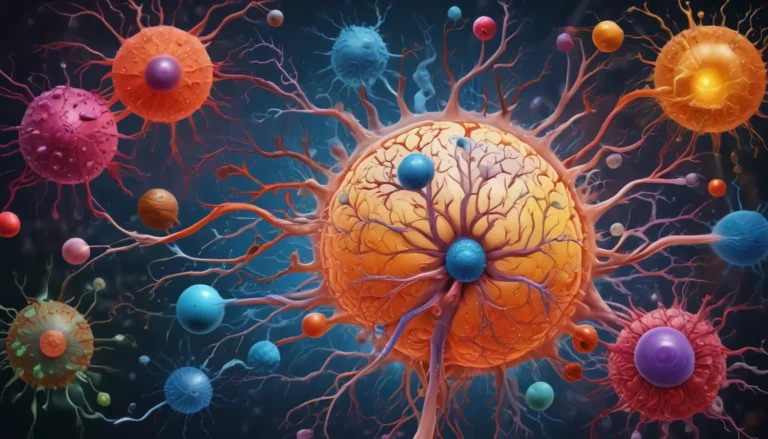A Note About Images: The images used in our articles are for illustration purposes only and may not exactly match the content. They are meant to engage readers, but the text should be relied upon for accurate information.
Endothermy, also known as warm-bloodedness, is a captivating physiological trait found in various organisms throughout the animal kingdom. Unlike their cold-blooded counterparts, endothermic animals possess the remarkable ability to regulate their body temperature internally, irrespective of external conditions. This unique adaptation offers them a host of advantages, enabling them to thrive in diverse habitats and overcome a myriad of challenges. In this article, we will explore 18 fascinating facts about endothermy, highlighting the complexity and adaptability of this extraordinary trait. From the evolutionary origins of endothermy to the mechanisms that sustain it, join us on a journey to unravel the mysteries behind warm-blooded animals and gain a deeper appreciation for nature’s ingenuity.
Unlocking the Essence of Endothermy
Endothermy, a distinctive physiological trait, refers to an organism’s ability to autonomously regulate its internal body temperature, regardless of external influences. This remarkable adaptation enhances metabolic activity and energy efficiency, setting endothermic animals apart from their cold-blooded counterparts.
Avian and Mammalian Domains of Endothermy
Birds and mammals reign as the primary groups of animals that exhibit endothermy, showcasing sophisticated mechanisms to uphold a stable body temperature. From the graceful flight of eagles to the playful antics of dolphins, and from the wintry home of polar bears to the swift agility of cheetahs, these creatures epitomize the essence of endothermy.
Thriving in Diverse Environments
Endothermy equips animals with the ability to generate and retain their body heat, enabling them to inhabit a broad spectrum of habitats, spanning from icy polar regions to scorching desert landscapes.
Embracing Enhanced Activity Levels
The heightened metabolic rate associated with endothermy empowers these animals to engage in increased levels of activity, fostering agility, hunting prowess, and exploration in their natural environments.
Understanding the Energy Demands
Sustaining a stable body temperature demands a substantial energy investment from endothermic organisms, necessitating a higher intake of food and a more elevated metabolic rate compared to ectothermic species.
The Hypothalamus: The Master Regulator
The hypothalamus, a vital region of the brain, plays a pivotal role in orchestrating the regulation of body temperature by processing signals from temperature sensors dispersed throughout the body.
Securing Survival and Reproductive Success
The ability to maintain a consistent body temperature bestows endothermic animals with an increased likelihood of survival in adverse conditions and facilitates year-round reproduction, enhancing their reproductive success compared to ectotherms.
The Endothermic Dinosaurs
Emerging studies propose that certain dinosaurs may have embraced endothermy, exhibiting physiological traits akin to present-day birds. This evolutionary advantage potentially contributed to their dominance in ancient ecosystems.
Beyond Vertebrates: Invertebrates Embrace Endothermy
While birds and mammals take the spotlight as renowned endothermic creatures, certain invertebrates, such as select insects and mollusks, also manifest this intriguing trait.
Facilitating Migration Journeys
Migrating birds leverage their endothermic prowess to regulate their body temperature during extensive journeys, enabling them to navigate diverse climates along their migration routes.
Defying Cold Environments
Endothermic animals can sustain activity levels and forage for sustenance even in frigid settings, offering them a competitive edge over their cold-blooded counterparts.
Humans: Embracing Endothermy
As fellow mammals, humans harness the capacity to internally regulate their body temperature, enabling us to adapt to varied climates and thrive across diverse landscapes.
Nurturing Complex Social Behaviors
The stability maintained through endothermy empowers these animals to engage in intricate social interactions, free from environmental dictates, fostering the evolution of complex social structures.
Heating Up with Thermogenesis
Specialized tissues, like brown adipose tissue, allow endothermic animals to generate heat through metabolic processes, aiding in temperature regulation and energy production.
Sharpening Senses with Stable Temperature
Maintaining a consistent body temperature enhances sensory functions in endotherms, optimizing perception and responsiveness to their surroundings.
Evolutionary Divergence in Birds and Mammals
The evolution of endothermy unfolded independently in birds and mammals, resulting in unique adaptations tailored to their respective environments and lifestyles.
Mastering Heat Conservation Techniques
Endothermic animals employ various strategies to conserve body heat, including insulation through fur or feathers, countercurrent heat exchange in extremities, and the regulation of blood flow to peripheral areas.
A Glimpse into Ancient Reptilian Lineages
The roots of endothermy trace back to ancient reptilian ancestors, with certain groups within this lineage paving the way for the eventual emergence of endothermic birds and mammals.
Conclusion: A Tapestry of Endothermic Marvels
Endothermy stands as a captivating adaptation prevalent across a diverse array of organisms, affording them the ability to uphold their internal body temperature amidst an ever-changing environment. From the hummingbird’s delicate flight to the whale’s majestic presence, endothermic animals exude evolutionary resilience and adaptive prowess. Delving into the intricacies of endothermy unveils a tapestry of evolutionary triumphs and ecological marvels, showcasing nature’s boundless creativity and diversity.
FAQs
Q: What is endothermy?
A: Endothermy is the capacity of an organism to autonomously regulate and maintain its internal body temperature, independent of external conditions, enabling them to thrive across varied environments.
Q: Which animals exhibit endothermy?
A: Birds and mammals comprise the primary groups of animals that display endothermy, encompassing a wide array of species such as humans, elephants, whales, and a myriad of bird species.
Q: What advantages does endothermy offer?
A: Endothermy bestows animals with the ability to remain active in cooler climates, thrive in diverse habitats, sustain cognitive functions, and enhance survival prospects in fluctuating environments.
Q: How do endothermic animals generate heat?
A: Endothermic animals produce heat through metabolic processes, primarily through the oxidation of food, distributing this warmth throughout their bodies to uphold a constant internal temperature.
Q: Are all endothermic animals warm-blooded?
A: Yes, all endothermic animals are warm-blooded, signifying their capacity to maintain a stable internal body temperature regardless of external thermal conditions.
Unravel the mysteries of endothermy, embark on a journey of discovery, and witness the wonders of warm-blooded marvels as they navigate the kaleidoscope of nature’s intricacies. Let your curiosity guide you as you delve deeper into the realms of endothermy and witness the evolutionary feats and ecological marvels that shape the animal kingdom.






